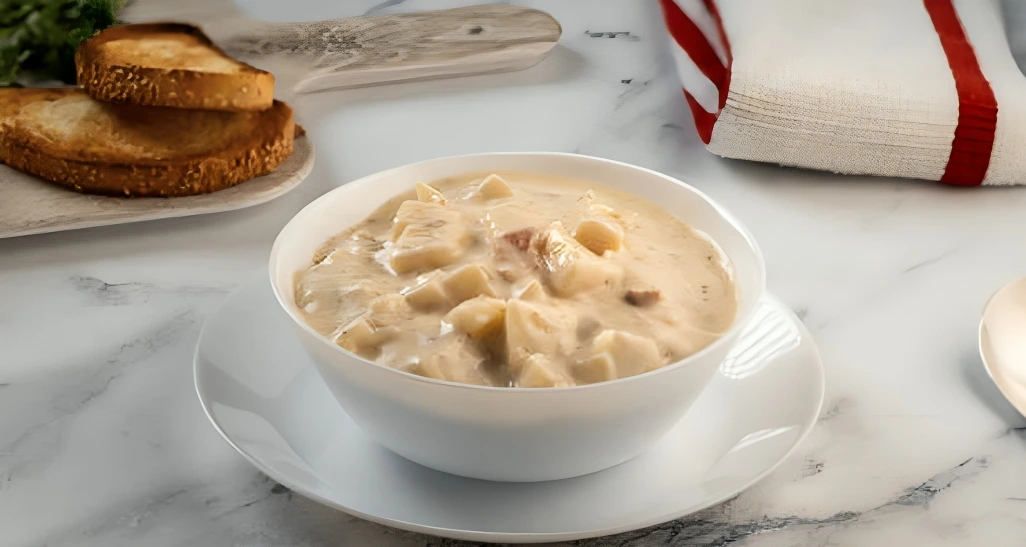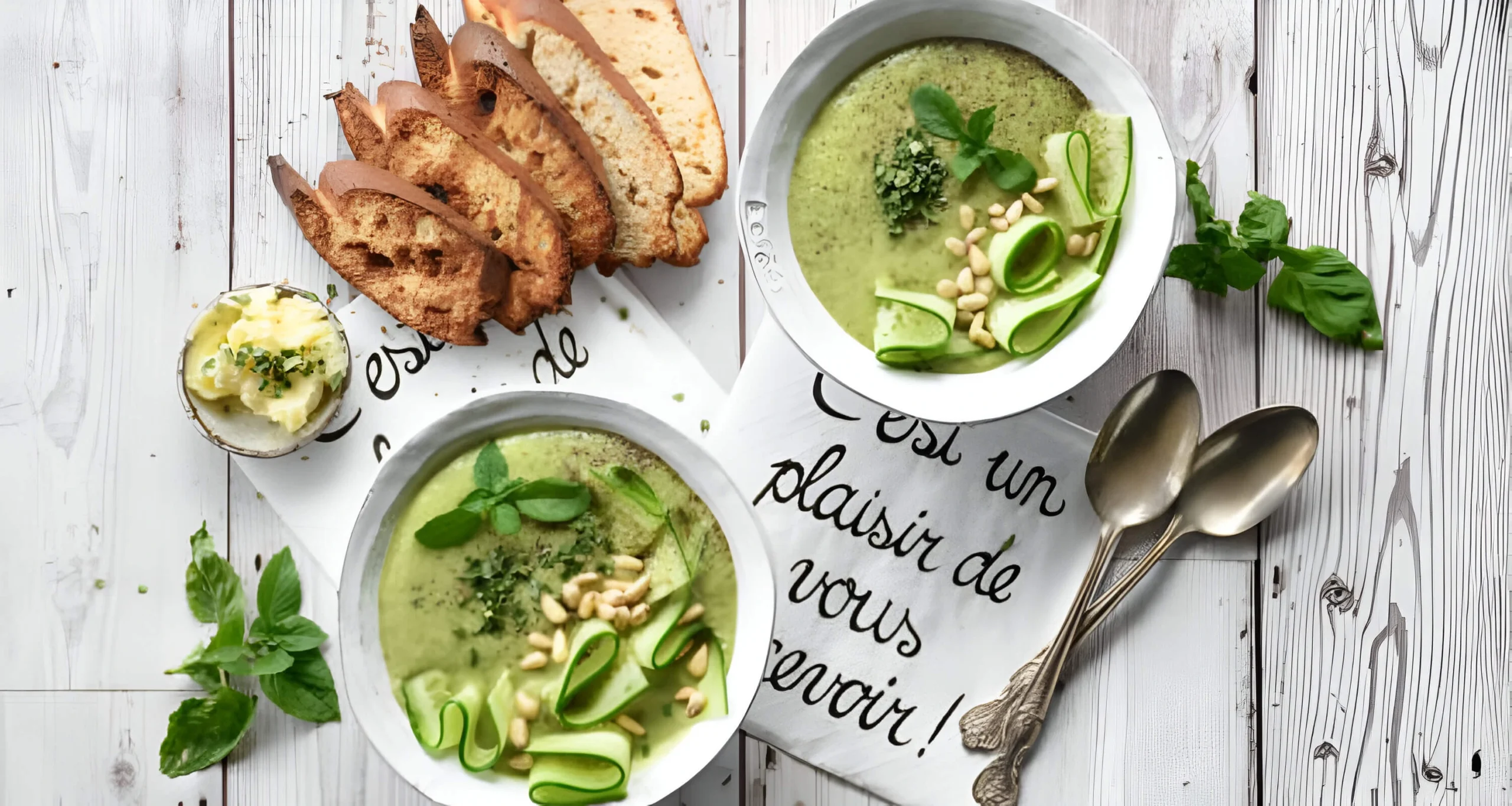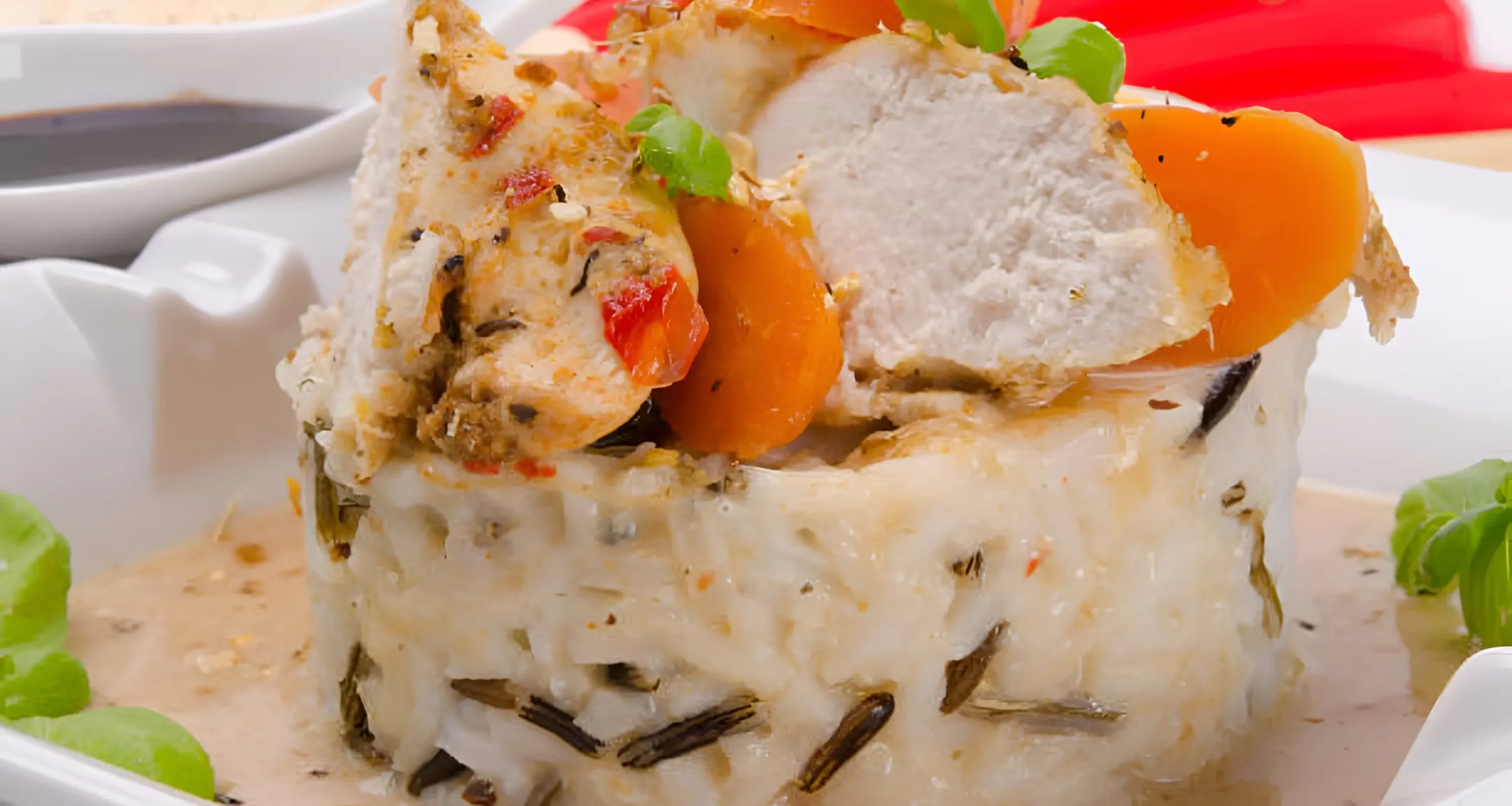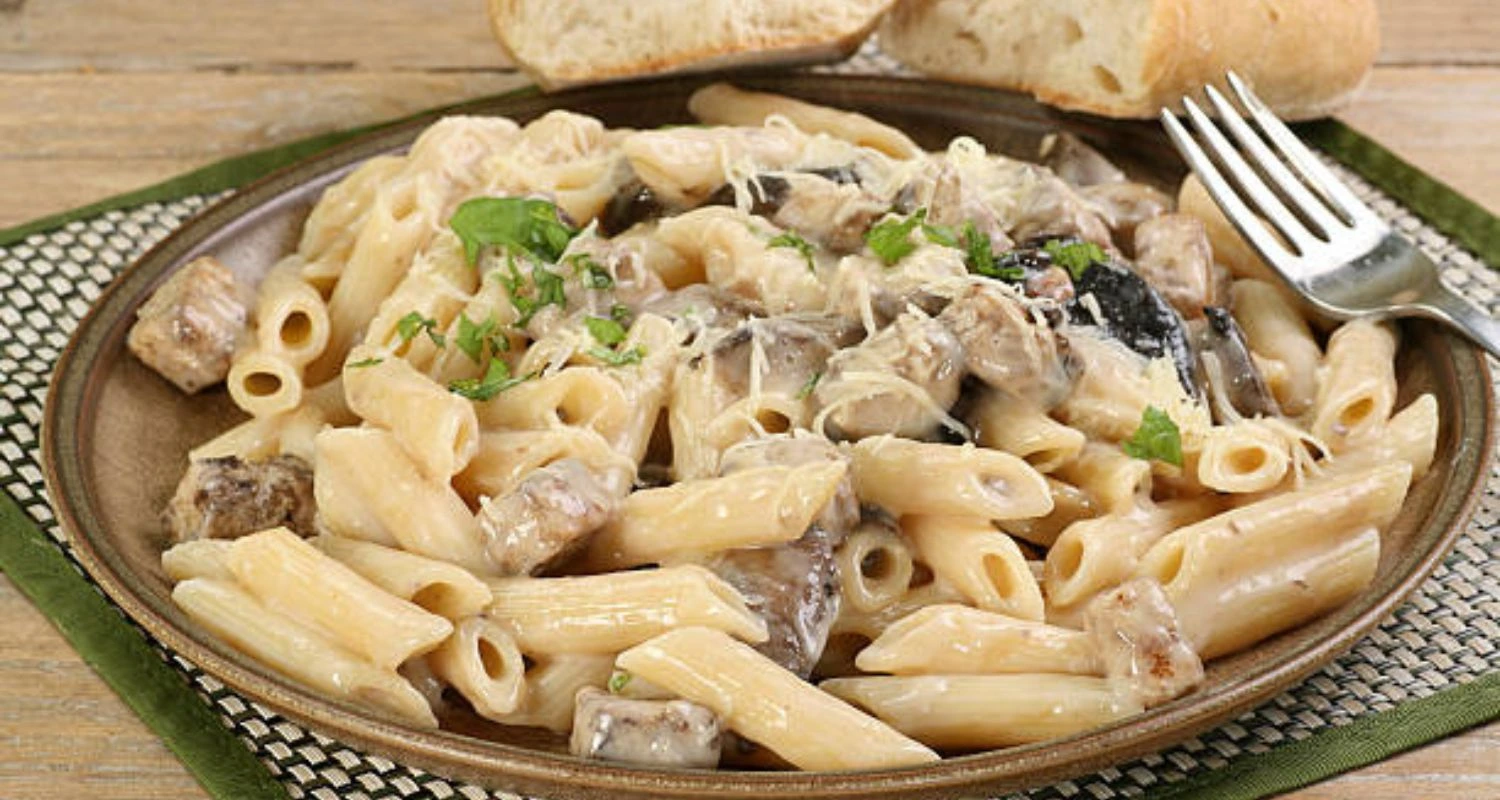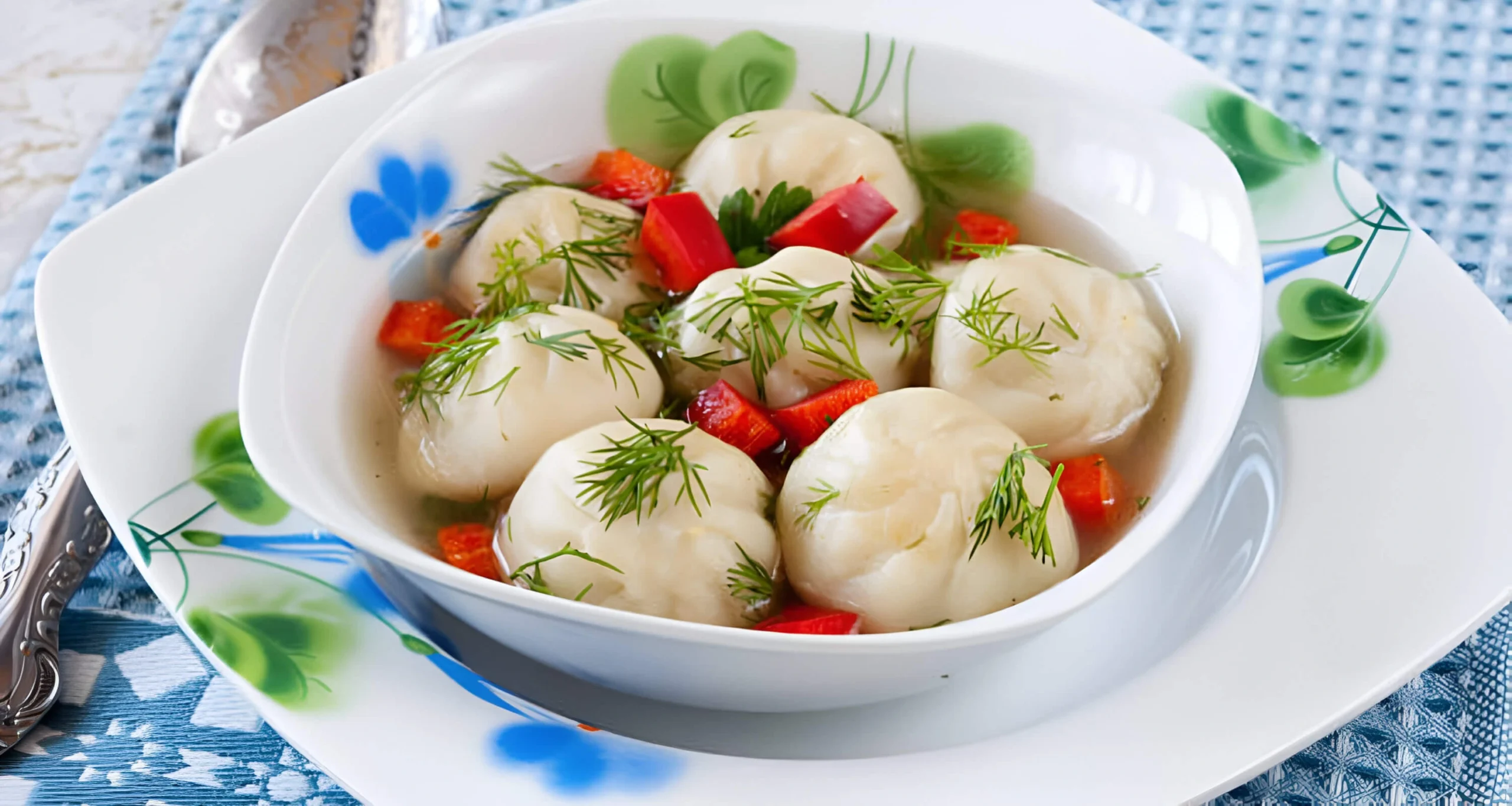Hearty Gluten Free Potato Soup: Ultimate Comfort Food Meal

Looking for a warm, satisfying meal that fits dietary needs? Gluten free potato soup is the answer. It’s creamy and rich, turning simple ingredients into a tasty, healthy meal.
If you have celiac disease or prefer a gluten free diet, this soup is a great choice. It’s easy to make at home and tastes just as good as restaurant versions. It’s full of flavor and good for you.
Learning to make gluten free potato soup opens up new cooking possibilities. You can make a hearty meal from basic ingredients. It’s something everyone can enjoy, no matter their dietary needs.
Key Takeaways
- Gluten free potato soup offers a delicious meal option for restricted diets
- Easy to prepare with simple, wholesome ingredients
- Provides comfort and nutrition in one bowl
- Adaptable to various dietary preferences
- Can be made creamy without traditional wheat-based thickeners
Understanding Gluten Free Potato Soup Essentials
Finding gluten free soups can be tough for those with dietary limits. Potato soup is a tasty option for those looking for comfort food that’s also healthy. It’s important to know how to make gluten and dairy-free soups to enjoy a good meal.
Traditional potato soups might have gluten that can upset some people’s stomachs. Knowing what to avoid helps make safe and tasty meals.
Common Ingredients in Traditional Potato Soup
- Wheat-based flour for thickening
- Cream-based broths
- Pre-packaged soup mixes
- Processed cheese products
Why Choose Gluten Free Options
Gluten free soups are great for people with certain dietary needs. They offer a way to enjoy meals without health risks. Plus, they let you get creative in the kitchen.
Health Benefits of Going Gluten Free
- Improved digestive health
- Reduced inflammation
- Enhanced nutrient absorption
- Increased energy levels
Learning about these key points lets you make potato soup safe, healthy, and fun for everyone.
Essential Ingredients for Your Gluten Free Potato Soup
Making a tasty gluten free potato soup starts with picking the right ingredients. Your list of ingredients is the base of a meal that’s both safe and delicious for everyone.
For your gluten free potato soup, choose key ingredients that are naturally gluten-free and full of flavor:
- Potatoes (russet or Yukon gold work best)
- Gluten-free chicken or vegetable broth
- Heavy cream or dairy-free alternative
- Fresh herbs like chives and parsley
- Salt and black pepper
Thickening agents are key for your gluten free potato soup. Instead of using wheat flour, try safe alternatives like:
- Cornstarch
- Arrowroot powder
- Potato starch
Be careful with packaged ingredients. Always check labels to make sure they’re gluten-free. Some items, like pre-shredded cheese or bacon, might have gluten-based additives.
Pro tip: When in doubt, choose whole, unprocessed ingredients to minimize cross-contamination risks.
Adding protein like crispy bacon, shredded chicken, or cheese can make your gluten free potato soup even better. Just make sure they’re gluten-free before adding them.
Kitchen Tools and Equipment Needed
Preparing a delicious gluten free loaded potato soup needs the right tools and equipment. The right gear makes cooking smoother and more fun. Whether you’re a pro chef or a home cook, the right appliances matter a lot.
For your gluten free loaded potato soup, you’ll need some key tools. The right equipment helps you make a creamy, tasty soup. It also makes sure you stick to your gluten-free diet.
Must-Have Appliances for Perfect Soup Preparation
- Large Stock Pot: A heavy-bottomed pot ensures even heat distribution and prevents burning
- Immersion Blender: Perfect for creating smooth, creamy textures without transferring hot liquids
- Sharp Cutting Board: Helps you precisely chop potatoes and other ingredients
- Quality Chef’s Knife: Essential for precise vegetable preparation
Optional Tools for Enhanced Soup Making
While not necessary, these tools can make your gluten free loaded potato soup even better:
- Potato Ricer: Creates ultra-smooth potato textures
- Slow Cooker: Allows for hands-off, gentle cooking
- Digital Kitchen Scale: Ensures precise ingredient measurements
- Microplane Grater: Perfect for adding fresh cheese or zest toppings
Investing in quality kitchen tools can take your gluten free potato soup from good to amazing. Each tool has its own role in making a delicious, comforting meal for everyone.
Step-by-Step Guide to Perfect Gluten Free Potato Soup
Making a tasty gluten free potato soup recipe needs careful steps. Start by picking the best ingredients. Then, follow a detailed cooking method for a creamy, flavorful soup.
- Russet or Yukon Gold potatoes
- Gluten free chicken or vegetable broth
- Heavy cream or dairy-free alternative
- Fresh herbs like thyme and parsley
- Onions and garlic
- Gluten free cornstarch or arrowroot powder
Here’s how to prepare your gluten free potato soup:
- Peel and dice potatoes into uniform chunks
- Sauté onions and garlic in butter or olive oil
- Add potatoes and broth to the pot
- Simmer until potatoes are tender
- Mash some potatoes to create natural thickness
- Stir in cream and seasonings
“The secret to a perfect gluten free potato soup is patience and layering flavors.” – Professional Chef
Thickening your soup needs a special touch. Mix gluten free cornstarch with cold water to avoid lumps. Slowly add this slurry to your soup while stirring.
| Ingredient | Quantity | Purpose |
|---|---|---|
| Potatoes | 4 large | Base of soup |
| Broth | 4 cups | Liquid base |
| Cream | 1 cup | Creaminess |
Your gluten free potato soup is ready. Serve it hot with fresh herbs. Enjoy a comforting meal that’s safe for those with gluten sensitivities.
Selecting the Right Potatoes for Your Soup
Choosing the perfect potato is key to making a delicious gluten free soup. It’s not just about any potato. Knowing the right one can make your soup amazing.
Best Potato Varieties for Soup Making
For a gluten free soup, picking the right potato is important. Each type adds its own texture and taste:
- Russet Potatoes: Great for creamy, thick soups
- Yukon Gold Potatoes: Add a buttery flavor and creamy texture
- Red Potatoes: Keep their shape well, perfect for chunky soups
Smart Potato Storage and Preparation
Proper handling of potatoes is essential for a fresh gluten free soup. Store them in a cool, dark place with good air. Before cooking, follow these steps:
- Wash potatoes well
- Remove any green spots or sprouts
- Cut potatoes into uniform sizes for even cooking
- Rinse cut potatoes to remove excess starch
By knowing about potato varieties and how to prepare them, you’ll make a gluten free soup that’s both healthy and tasty.
Dairy-Free Alternatives for Creamy Texture
Making a creamy gluten and dairy-free soup is easy. You don’t have to give up on rich flavors or smooth textures. Plant-based alternatives can turn your potato soup into a luxurious, velvety dish.
When making a dairy-free soup, you’ll find amazing milk substitutes. They add depth and creaminess:
- Coconut milk: Provides rich, smooth consistency
- Almond milk: Offers light, subtle creaminess
- Cashew cream: Creates incredibly thick texture
- Oat milk: Delivers neutral, creamy base
There are also cool techniques to make your soup even creamier. Puréed vegetables like cauliflower or white beans are great. They make your soup thicker and add more nutrients.
Professional chefs say to try different plant-based options. Each one changes your soup’s flavor in a special way.
The secret to an exceptional dairy-free soup lies in understanding how different ingredients interact and complement each other.
Your gluten and dairy-free soup can be just as good as the traditional kind. With the right ingredients and techniques, you’ll make a comforting meal for everyone.
Seasoning and Flavor Enhancement Techniques
Making a tasty gluten free potato soup is more than just ingredients. The right seasonings can turn your soup into a masterpiece. Learning how to enhance flavors will make your soup a true delight.
Herb and Spice Combinations
Finding the perfect mix of herbs and spices is key. Here are some great options:
- Classic herb mix: Thyme, rosemary, and parsley
- Spicy option: Smoked paprika and cayenne pepper
- Earthy blend: Sage and black pepper
- Fresh approach: Dill and chives
Natural Flavor Boosters
To make your soup even better, try these natural enhancers:
- Roasted garlic – Adds deep, caramelized notes
- Nutritional yeast – Provides rich, cheesy undertones
- Caramelized onions – Brings sweet, complex flavor
- Fresh herbs – Introduces bright, fresh elements
Layering flavors is essential for a rich soup. Start with sautéed aromatics. Then, add herbs and spices for depth. Finish with fresh garnishes for the best taste.
Making Your Soup Thick Without Gluten
Creating thick and creamy gluten free soups requires clever techniques. You don’t need gluten for a rich, satisfying texture in potato soup. Several natural and simple methods can help you achieve the perfect consistency without losing flavor or dietary needs.
The best gluten free soups use potato starch, cornstarch, or rice flour as thickening agents. These alternatives work great to make your soup smooth and velvety. When using these ingredients, mix them with a small amount of cold liquid first. This prevents clumping when you add them to your hot soup.
- Potato starch: Neutral flavor, excellent thickening power
- Cornstarch: Quick and easy to use
- Rice flour: Smooth consistency, minimal flavor impact
Another technique is to puree a portion of your soup’s vegetables. Blending some potatoes or other starchy vegetables increases the soup’s thickness. This method adds nutrients and deepens the flavor of your gluten free soups.
Xanthan gum is a powerful thickening agent for a professional touch. Just a small pinch can change your soup’s texture without gluten. Start with a small amount and adjust as needed to get the right consistency.
Pro tip: Let your soup simmer for an extra 10-15 minutes. This helps natural thickening and allows flavors to fully develop.
Popular Toppings and Garnishes

Turning your gluten free loaded potato soup into a hit is all about the toppings. The right mix can make a simple soup into a feast for your taste buds. It also adds a pop of color.
Creating a memorable gluten free loaded potato soup is all about garnishing. You want to add texture, flavor, and excitement to every bite.
Gluten Free Crouton Alternatives
Croutons often have gluten, but you have many tasty alternatives:
- Roasted chickpeas seasoned with herbs
- Crispy bacon bits
- Toasted gluten-free bread cubes
- Crisp potato skin crumbles
- Crushed gluten-free crackers
Creative Garnishing Ideas
Make your gluten free loaded potato soup stand out with these garnishes:
- Fresh herbs: Chopped chives, parsley, or dill
- Shredded sharp cheddar cheese
- Crispy bacon crumbles
- Green onion slices
- Dollop of gluten-free sour cream
- Cracked black pepper
Always check labels to keep your toppings gluten-free. With these ideas, your soup will be a hit with everyone.
Storage and Reheating Guidelines
Storing your gluten free soup right is key to keeping its flavor and safety. After making your favorite soup, cool it down and store it correctly. This helps keep its taste and nutrients.
Here are the main tips for storing your soup:
- Cool the soup completely before refrigerating
- Use airtight containers made of glass or BPA-free plastic
- Store in the refrigerator for up to 3-4 days
- Freeze for extended storage up to 2-3 months
Reheating your soup needs some care to keep its texture and taste. First, thaw frozen soup in the fridge overnight. Then, use these methods to reheat:
- Stovetop: Warm on medium-low heat, stirring occasionally
- Microwave: Use a microwave-safe container and stir every 30 seconds
Pro tip: Add a splash of broth or water when reheating to prevent the soup from becoming too thick or losing moisture. Adding fresh herbs or a sprinkle of seasonings can bring back the soup’s original taste.
Remember, always check the temperature of your gluten free soup to ensure it’s heated thoroughly before serving.
Variations of Gluten Free Potato Soup
Your gluten free potato soup recipe can be exciting. Try different variations to make it a fun culinary adventure. This soup is versatile, letting you mix in flavors and ingredients from all over.
Adding regional flavors can change your soup a lot. Each place has its own twist that makes your soup special.
Seasonal Flavor Transformations
Using seasonal ingredients makes your soup fresh and fun. Here are some ideas:
- Autumn Harvest: Roasted butternut squash and sage
- Spring Freshness: Fresh peas and mint
- Summer Delight: Corn and chives
- Winter Warmth: Caramelized onions and thyme
Global Cuisine Inspirations
Get ideas from international cuisines for your soup. Each place has its own flavors that can make your soup unique:
- Irish-inspired leek and potato combination
- Indian-style spiced potato soup with turmeric
- Mexican-influenced soup with roasted poblano peppers
- Mediterranean version with olive oil and rosemary
Being creative and trying new things is key to a great gluten free potato soup. Your taste buds will love the adventure!
Common Mistakes to Avoid

Making the best gluten free soups needs focus and careful steps. Many cooks make mistakes that can ruin their potato soup’s quality and safety.
Here are some common mistakes to watch out for:
- Overlooking hidden gluten sources in ingredients
- Improper kitchen cross-contamination prevention
- Incorrect thickening techniques
- Neglecting careful label reading
Seasoning can be tricky for those with gluten sensitivities. Pre-packaged seasonings often contain gluten-based additives. Always check the ingredient lists. Bouillon cubes and soup bases are known to hide gluten in your recipe.
| Potential Gluten Source | Safe Alternative |
|---|---|
| Commercial Bouillon Cubes | Certified Gluten-Free Broth |
| Wheat-Based Thickeners | Cornstarch or Potato Starch |
| Generic Seasoning Blends | Individually Verified Spices |
Texture issues can mess up your gluten free soups. Don’t use too much thickener, as it can make the soup gummy or grainy. Start with a little and add more until it’s just right.
How you prepare your kitchen is key. Use a separate cutting board and utensils for gluten-free cooking to avoid cross-contamination. Your hard work will pay off with a safe, tasty potato soup every time.
Conclusion
Making a tasty gluten free potato soup is more than a recipe. It’s a journey that turns simple ingredients into a cozy meal. You learn to make a soup that’s safe and enjoyable for those who can’t eat gluten.
Gluten free potato soup lets you try many flavors and mix-ins. You can make it creamy or loaded with toppings. The tips in this guide will help you get better at cooking. Try different potatoes, spices, and toppings to make your soup unique.
Keeping a gluten free kitchen means being careful with ingredients. Follow the advice and know about cross-contamination to make safe meals. Your effort to learn gluten free cooking will lead to amazing potato soups for everyone.
Keep improving your gluten free potato soup recipe. Be creative and listen to your cooking sense. Every time you make it, you get closer to creating a dish that’s warm, healthy, and comforting.
FAQ
What makes a potato soup gluten free?
A gluten-free potato soup doesn’t use gluten. This means no wheat flour for thickening. Instead, use cornstarch, potato starch, or arrowroot powder for creaminess. Make sure broth, seasonings, and other ingredients are gluten-free.
Can I make this soup dairy-free as well?
Yes, you can make it dairy-free too. Replace dairy milk and cream with almond milk, coconut milk, or cashew cream. Use vegetable broth instead of chicken broth. Choose toppings like nutritional yeast or dairy-free sour cream.
What are the best potatoes for gluten-free potato soup?
Russet and Yukon Gold potatoes are the best. Russet potatoes make it creamy. Yukon Golds add a buttery flavor. They break down well, making the soup thick and smooth.
How can I thicken my gluten-free potato soup?
There are many ways to thicken it without wheat flour. Puree some potatoes, use cornstarch or potato starch, or mash potatoes in the soup. You can also simmer it longer to thicken naturally.
Are all potato soup toppings gluten free?
Not all toppings are gluten-free. Watch out for croutons, pre-shredded cheese, and bacon bits. Choose certified gluten-free toppings like fresh herbs, green onions, and crispy bacon.
How long can I store gluten-free potato soup?
Store it in an airtight container in the fridge for 3-4 days. Freeze it for up to 2-3 months. When reheating, add broth or milk to keep it creamy.
Can I make this soup in a slow cooker?
Yes! A slow cooker is great for gluten-free potato soup. Add ingredients, set to low for 6-8 hours or high for 3-4 hours. Stir occasionally for deep flavors and creamy texture.
What are some protein additions for gluten-free potato soup?
Add protein with diced chicken, ham, bacon, or beans. Make sure these are gluten-free. Add them at the right time to keep the soup’s texture and flavor.
Add a Dash of Your Thoughts!
There are no reviews yet. Be the first one to write one.


